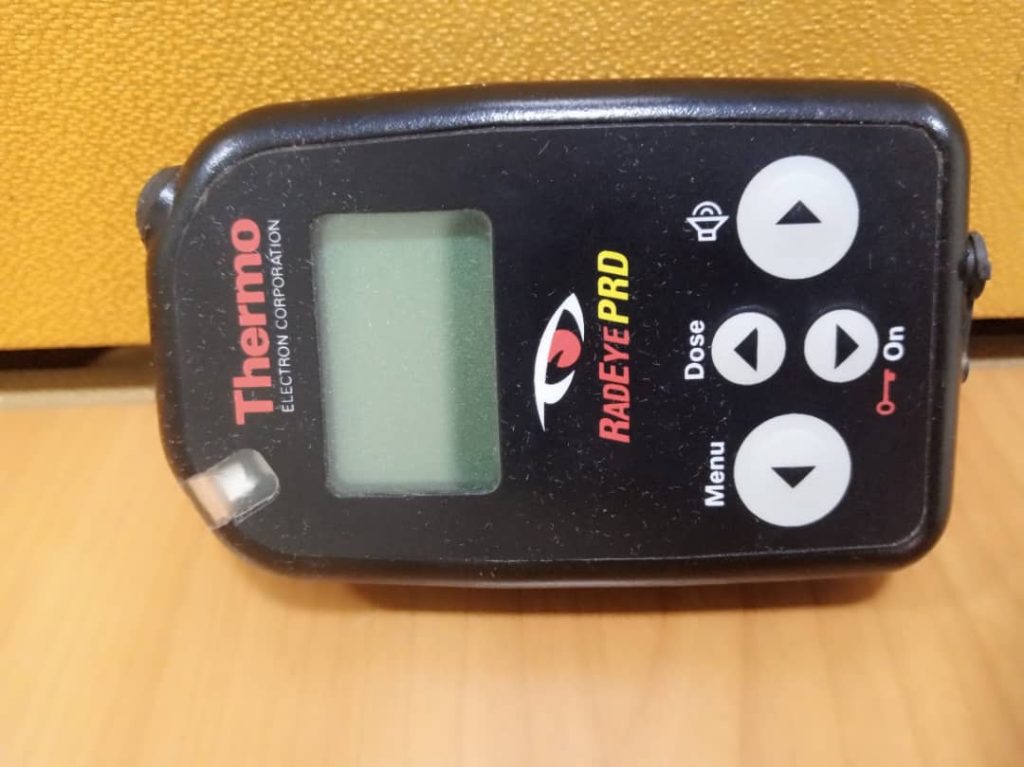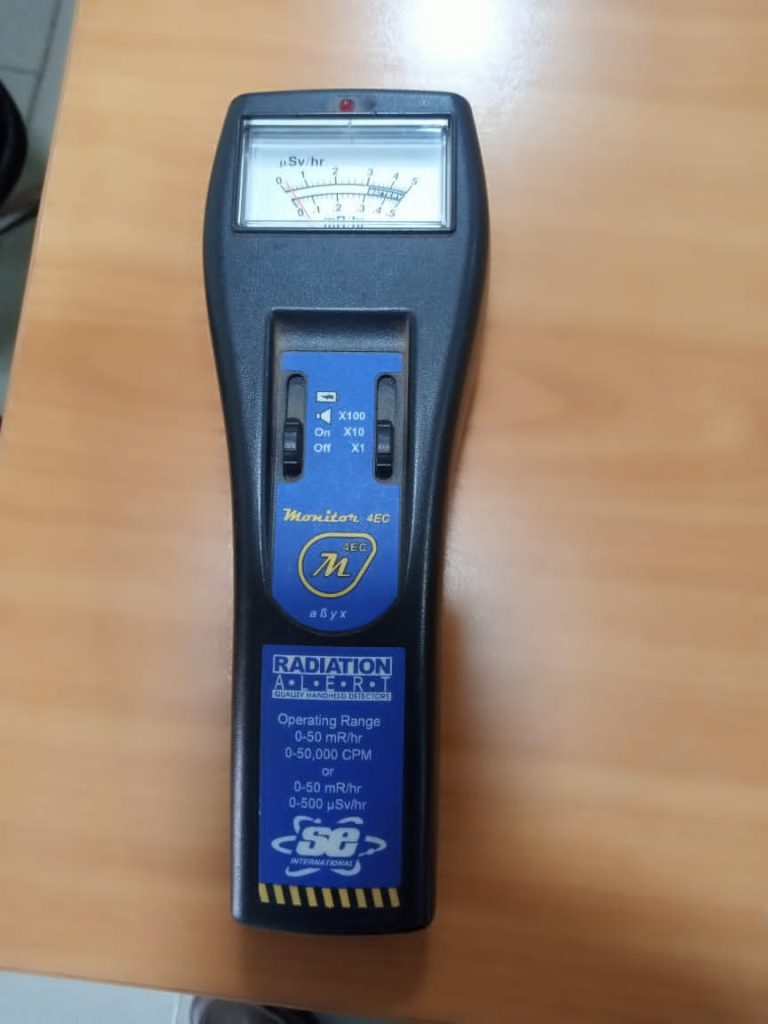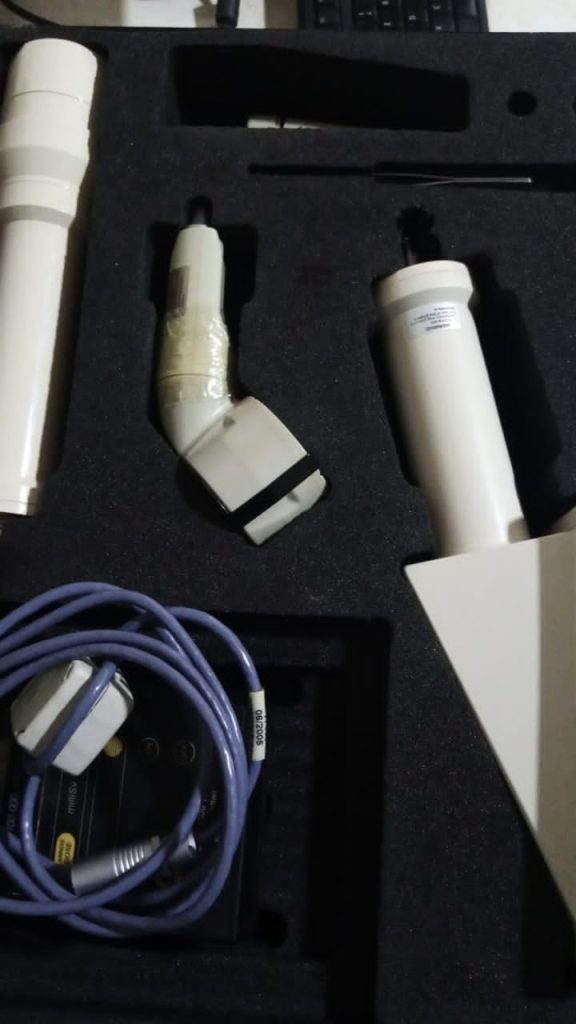By Collins Kafui Azah
Accra, Nov. 24, GNA – Many different concepts and factors are measurable. Most often, Length, Area, Volume, Mass, and Time are measured on daily basis and almost everyone can measure them.
Radiations are also measurable. The National Institute of Standards and Technology says metrology is the science of measurement and its application. A metrologist then is a scientist who develops processes and systems used to measure these concepts and objects.
Do not confuse metrologist with meteorologist. The latter studies the earth’s atmosphere (climate and weather) to be able to forecast weather conditions.
All humans and the environment are exposed to low level radiations, commonly known as background radiation, and they have adapted to these radiations.
The application of radiations and radioactive materials for human benefit is termed practice. These human activities add to the background radiation to result in elevated radiation exposure of persons.
The practices include the production of radiation sources and radioactive materials used in medicine, research, industry, agriculture, and teaching; the generation of nuclear power, the management of radioactive waste; and mining activities.

There are standards that govern these practices and are intended to reduce exposure of persons working with radiations and radioactive materials to levels as low as reasonably allowable (ALARA). For this to be achieved radiation metrology plays a key role.
To detect the presence of radiation and subsequently quantify it, there is the need for a range of detectors that can be put into two main categories: active and passive detectors. They are also known as dosimeters.
While active dosimeters produce a radiation-induced signal that displays a direct reading of the detected radiation (dose) or detected radiation per unit time (dose
rate) in real-time, passive dosimeters store the radiation-induced signal in the device, which must be processed later, and the output analysed.
This makes active dosimeters like survey meters, contamination monitors, and electronic personal dosimeters a preferred choice, even though passive and the active dosimeters are often used together to complement each other.
Active dosimeters can give either a continuous readout of current dose rate, or cumulative dose or both. Active dosimeters can also warn the person wearing it when a specified dose rate or a cumulative dose is exceeded through audio-visual alarms.
Passive dosimeters like film, optically stimulated luminescence (OSL), and Thermoluminescence Dosimeter (TLD) badges are usually worn for a month, or longer, by a person on-duty before the accumulated dose is processed and known.
In Ghana that legal period is three months. These devices are often used in places where some personnel are exposed to low levels of radiation on a periodic basis like radiology and radiotherapy units in hospitals, mines, and oil and gas industries.
The active and passive dosimeters collectively are known as radiation protection dosimeters as they help in protecting humans and the environment against the harmful effects of radiation.

All radiation protection dosimeters need to be checked and certified that their readouts are comparable with other dosimeters elsewhere in the world.
This is done by comparing their measurement abilities under standard reference environmental conditions with an instrument of the highest metrological quality called Primary Standard that permits determination of the unit of a quantity from its definition.
This process is called calibration. The laboratories hosting these radiation primary standards are known as Primary Standard Dosimetry Laboratories (PSDL).
Their purpose is to develop, maintain, and improve primary standards in radiation dosimetry. There are only 18 PSDLs in the world. The accuracy of the primary standards in each of these laboratories have been verified by comparison with each other.
There are millions of dosimeters in use worldwide, and all cannot be sent to these 18 PSDLs for checking. The World Health Organisation (WHO) and the International Atomic Energy Agency (IAEA), therefore, established a Network of Secondary Standard Dosimetry Laboratories (SSDL) in 1976 to be a link between the PSDLs and field dosimeters.
These SSDLs have secondary standards that are calibrated in the PSDLs and they in turn calibrate radiation detectors in use in various countries.
With this arrangement, the SSDLs provide traceability route for equipment to the international system of units. SSDLs improve the accuracy of radiation dosimetry and are designated as national dosimetry standards.
The aim of the Network is to disseminate and encourage correct use of the dosimetry quantities and units through the proper calibration of field instruments by the SSDLs.
The IAEA has a Dosimetry Laboratory that is the central laboratory of the Network and plays a key role by providing reference dosimeter calibrations, comparisons, reference irradiations and postal dose-audit services to member states.
Ghana has an SSDL, which is a member of the WHO/IAEA Network of SSDLs and used to be the only one in West Africa until Nigeria got one some years ago. Ghana’s SSDL undertakes radiation protection level calibrations and has calibrated thousands of equipment over the years.
These are used in the oil and gas industry, health sector, mines, ports and harbours, research labs, food and beverage industries, and related fields.

All users of radiation detection and measuring devices in Ghana are mandated by regulations to calibrate their devices once in every year. Other African countries also use the services of Ghana’s SSDL.
The Government and people of Ghana must continue to lend their support to the Ghana SSDL so that the laboratory can continue to render quality service to ensure the protection of people and the environment.
It is at the heart of the peaceful applications of ionising radiations for human benefit and is hosted by the Radiation Protection Institute of the Ghana Atomic Energy Commission (GAEC).
(Dr Collins Azah is a Research Scientist, Health Physicist, Dosimetrist, and the Head of Ghana SSDL.)
GNA